
Basic policies 3
Co-creation for a green society
(collaboration with the industrial world)
We will support the expansion of zero-emission power supplies by actively promoting a harmonious co-existence with local communities and the development of new technologies in collaboration with the industrial world, including companies and organizations that are active in diverse industrial fields.
Leading projects 8
Promotion of new technological developments

We will promote electricity efficiency through the use of new equipment and construction equipment in new-build and renovation projects. We will also reduce CO2 by using construction materials created by new technologies.
- ○In the short term, promotion of ICT in construction (Stage 1)
- ○Over the long term, promote increased use of innovative construction equipment (electric, hydrogen, biomass, etc.) through usage rules, including harnessing construction materials created by new technologies
When it comes to preparing for the popularization of next-generation vehicles and fuel cell vehicles (FCVs) in particular, we will investigate the possibility of building hydrogen stations, based on automotive industry trends and the state of uptake of FCVs.
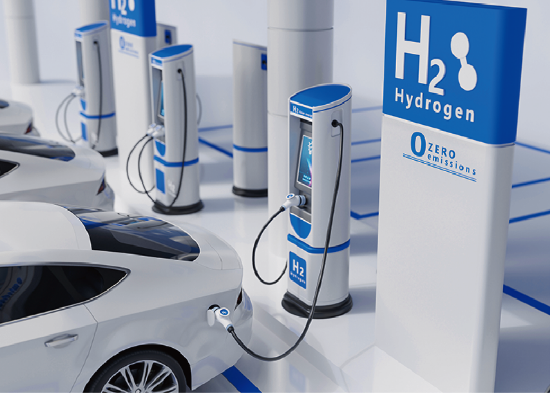
In addition to procuring from zero-emission electricity suppliers, we will also pursue renewable generation facilities to supply the Metropolitan Expressway, such as solar installations.

Introduction of renewable energy
We are installing solar and wind generation in parking areas and tunnel entrances, for example.
The electricity produced is used to supplement the power required for tunnel ventilation,
in parking area buildings, to light bathrooms and more.
We will continue to increase our adoption of renewable energy.

We will provide traffic information adapted to diverse needs.
- ○Facilitation of traffic flow and network optimization through installation of a next-generation mobile communication system that leverages large volumes of data such as individual vehicle location data and images
- ○Provision of information using probe data, etc
- ○Information support for driverless vehicle operation
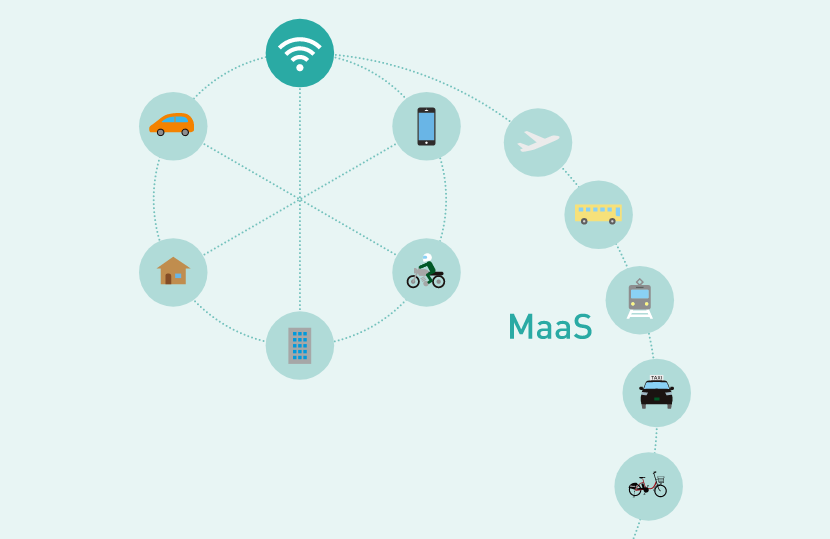
We will consider ways of strengthening nodal functions such as piloting mobility hubs,
adapting further to the MaaS society and support more efficient human mobility.
- *1 MaaS :
- Mobility as a Service. A service that seamlessly connects the user to transportation options other than their own vehicle, using ICT
Leading projects 9
Development of eco-friendly Parking Areas

In addition to upgrading our EV chargers, we will pursue the use of clean energy by harnessing renewable power sources.
Promoting the Use of ZEV
ZEV (Zero Emission Vehicle) refers to a vehicle that does not emit CO2 during vehicle operation, such as plug-in hybrid and electric vehicles. We have installed quick chargers to support and promote ZEVs. To encourage the use of electric cars, quick chargers for electric vehicles are provided in eight parking areas (Heiwajima (inbound), Yoga, Yoyogi, Shimura, Yashio, Ichikawa, Daikoku, and Kawaguchi). Therefore, electric vehicle users can use Metropolitan Expressway with peace of mind.
Quick charger installation location
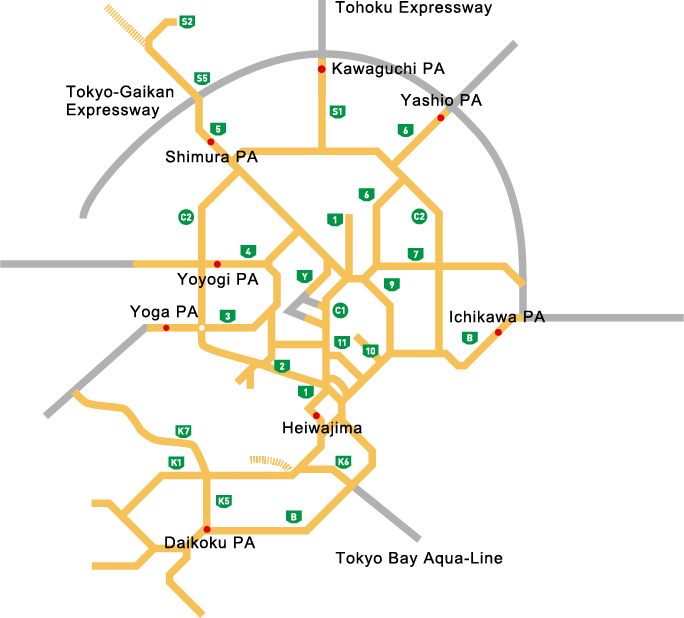
-
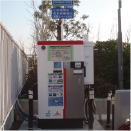
Shimura PA
-
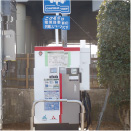
Kawaguchi PA
-
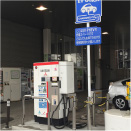
Yoyogi PA
-
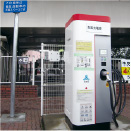
Yashio PA
-
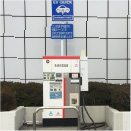
Yoga PA
-
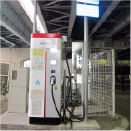
Ichikawa PA
-
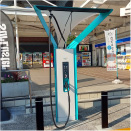
Daikoku PA
-
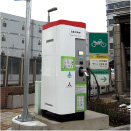
Heiwajima (inbound) PA
Detailed installation location and usage of the quick
charger for electric vehicles. (Shutoko website)
We will seek energy efficiency by installing new equipment when renovating facilities.
○With a focus on the carbon sequestration capacity of wood - and for the sake of healthy and robust domestic forestry - we will pursue the timber construction of facilities such as toilets and information kiosks as part of the "Second Urban Afforestation"(STAGE1)
○Use EFTE (a heat-resistant fluorine-based plastic) *1 film to allow in more natural light and reduce lighting requirements (Stage1)
○Reduce energy consumption by adopting passive design concepts *2 in spatial design(STAGE2)
*1. EFTE (a heat-resistant fluorine-based plastic): UV-resistant, weather-resistant and transparent material suited to long-term outdoor use
*2. Passive design: A design methodology that reduces environmental footprint by using the natural energy of solar heat and light as well as wind instead of machinery in a building
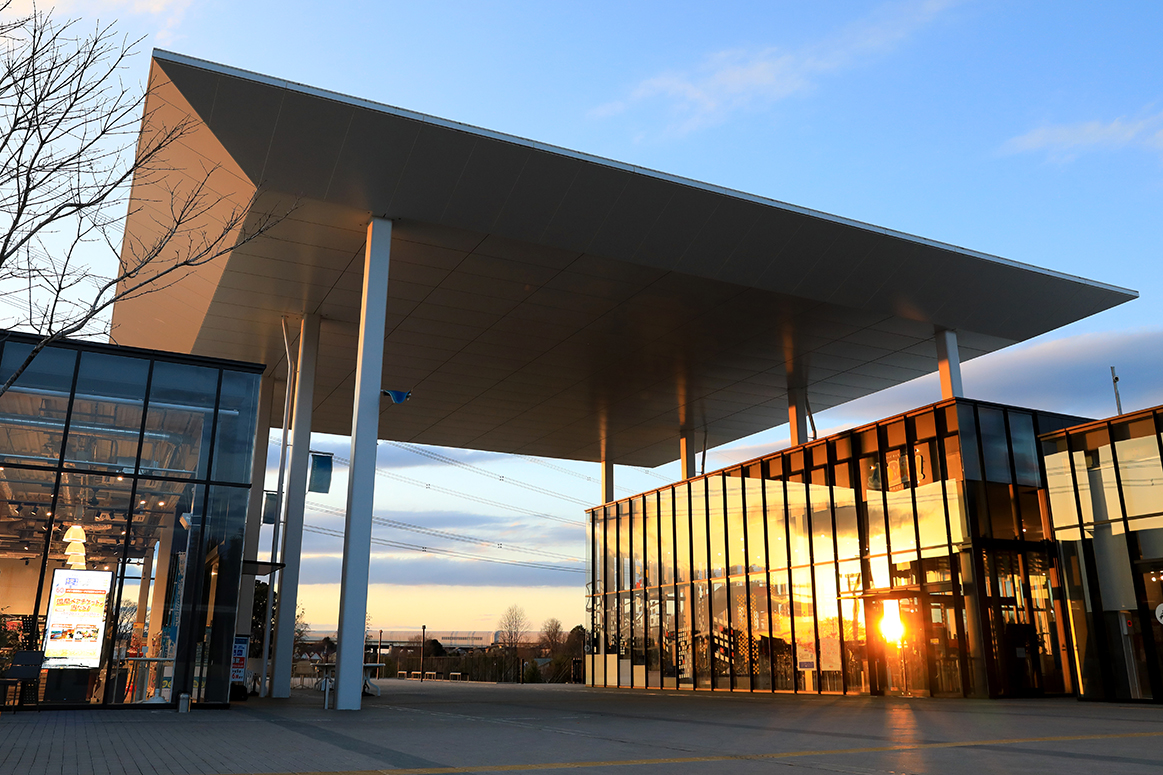

Eco-friendly Parking Areas
The Bayshore Route Oi Parking Area (westbound and eastbound), Yoyogi Parking Area and Kahei Parking Area are Eco-friendly Parking Areas, equipped with environmental technologies such as water-saving toilets, solar LED blocks and LED downlights. We will continue to implement eco-friendly initiatives at other parking areas going forward.
Water-saving toilets
We use water-saving toilets and various measures to prevent odors and stains.
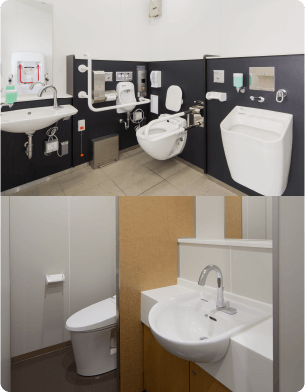
Solar LED block
Solar energy is stored during the day, and the LED blocks light up automatically to guide customers safely after dark.
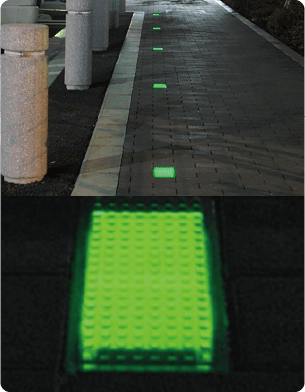
LED down power
LED downlights are used for indoor lighting to save electricity.
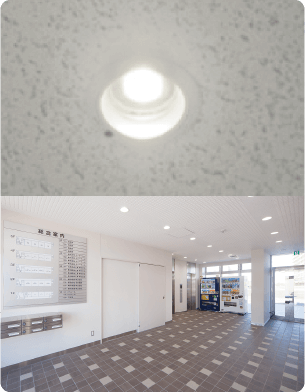
We are also planting vertically in narrow sites.
Greening of road spaces
We are planting out road spaces with the goals of improving the urban landscape and motoring conditions,
alleviating the heat island effect and preventing global warming.
Along roads, parking areas and junctions, we are working to establish greenery without neglecting the surrounding environment and maintenance.
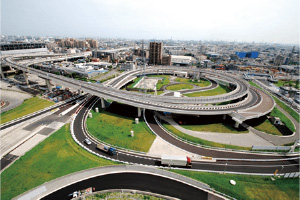
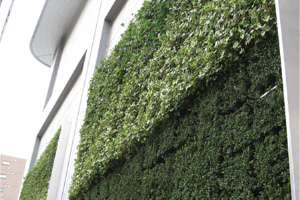
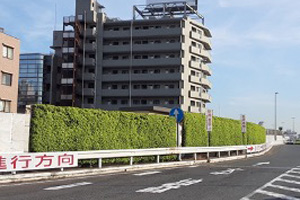
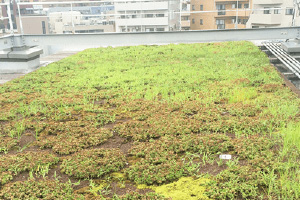
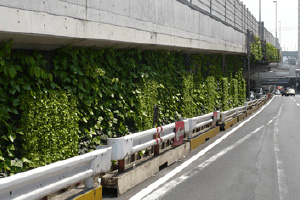
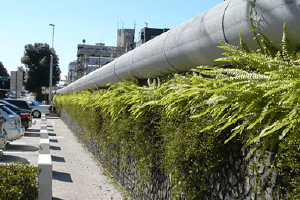
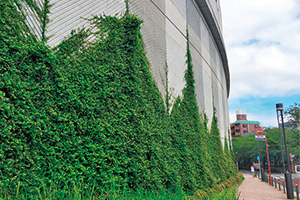
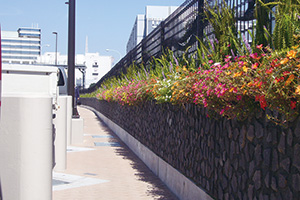
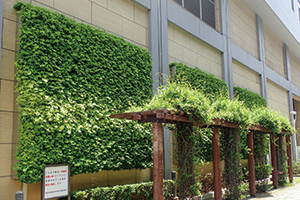
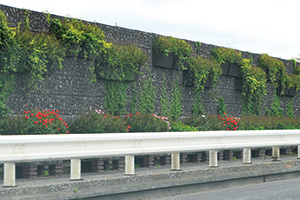
By simplifying plastic waste and packaging, we will reduce carbon emissions from waste incineration.
We will reduce emissions of CO2 arising from disposal of food by reducing food losses, which constitute 8-10% of the world's greenhouse gas emissions.
We will harness EV and PHV batteries as emergency sources of electricity in case of power cuts, vehicles in need of charging, etc.
Shutoko vision for 2050
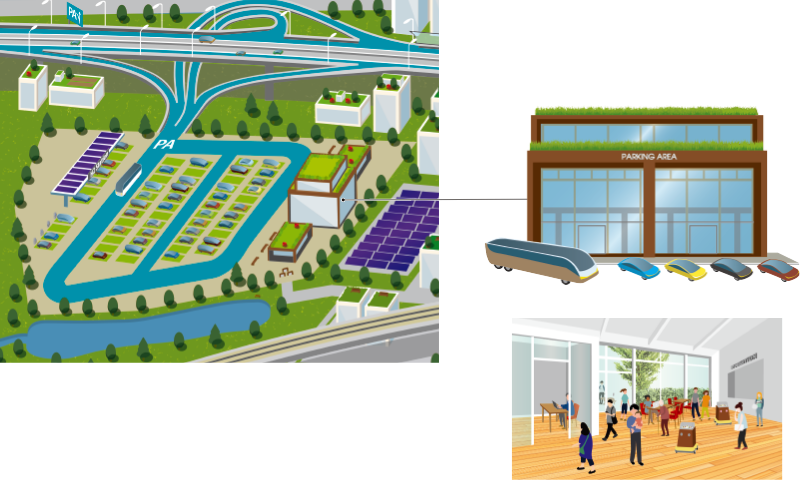
- Adoption of renewable energy in parking areas to supplement electricity supply
- Promoting use of timber in building
- Reduced use of plastics in Parking Area shops, simplified packaging
- Food loss reduction initiative
- Table service, cleaning performed by robots
- Remote working facilities installed
Leading projects 10
CO2 sequestration initiatives

○Continued management of Ohashi Sato no Mori (Ohashi ventilation station) and the Minuma Tanbo Shutoko Biotope as green nature restoration spaces (STAGE1)
○Conversion of junctions and ventilation stations to green spaces (STAGE1)
○Development of greening technologies that account for carbon sequestration capacity and ease of maintenance (STAGE2)
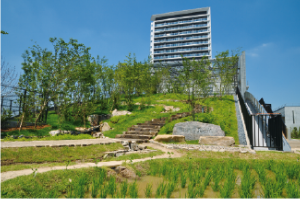
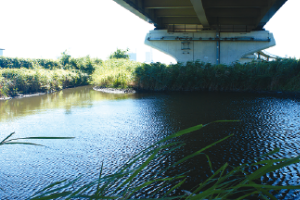
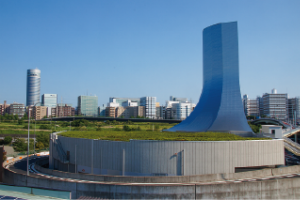
Ohashi Sato no Mori
"Ohashi Sato no Mori" is maintained on the roof of Ohashi Ventilation Center in Ohashi Junction.
As one of the bases of an ecological network that cooperates with the local green spaces and the nature of the Meguro River,
it is a green space that can contribute to the improvement of the local environment.
A
Ohashi Sato no Mori
—natural regeneration green space
One of the bases of an ecological network that cooperates with the natural areas of the Meguro River
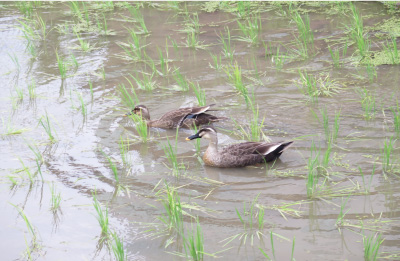
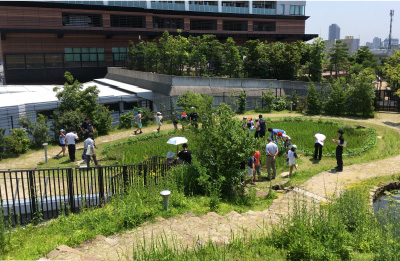
B
Meguro Sky Garden
—a rooftop park with rich greenery
Japan's first park built on the roof of a circular loop junction
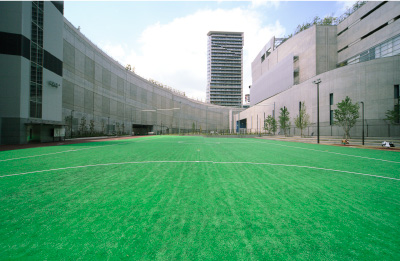
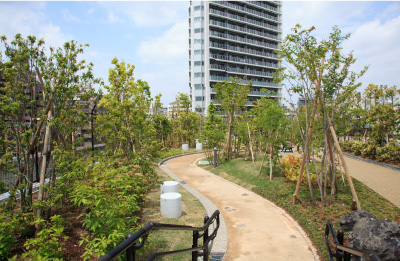
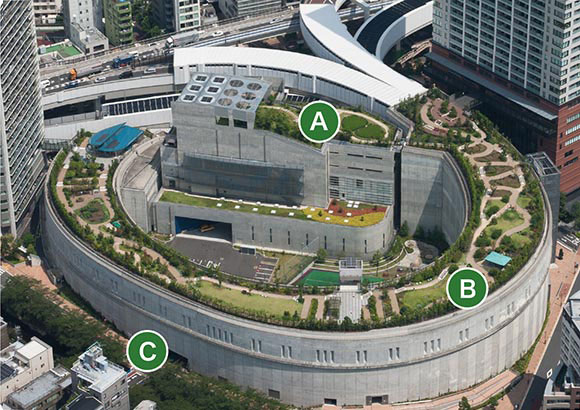
C
Wall Greening
—greenery in the city
Wall Greening that creates harmony with the surrounding environment (planting climbing figs)
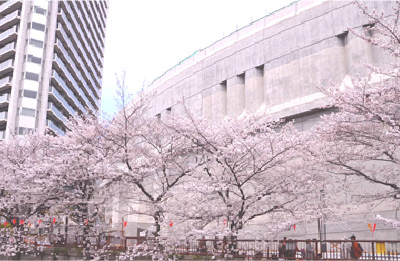
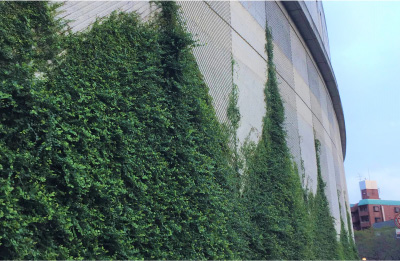
Minuma Tanbo Shutoko Biotope
In the Minuma Tanbo area of the Saitama Shintoshin Route,
we are aiming to be a "new urban expressway in harmony with nature".
In order to maintain the ecosystem of the Minuma Tanbo area, which is one of the few valuable green spaces left in the suburbs of the capital, we have a biotope with a length of 1.7 km and an area of 6.3 ha under the elevated expressway.
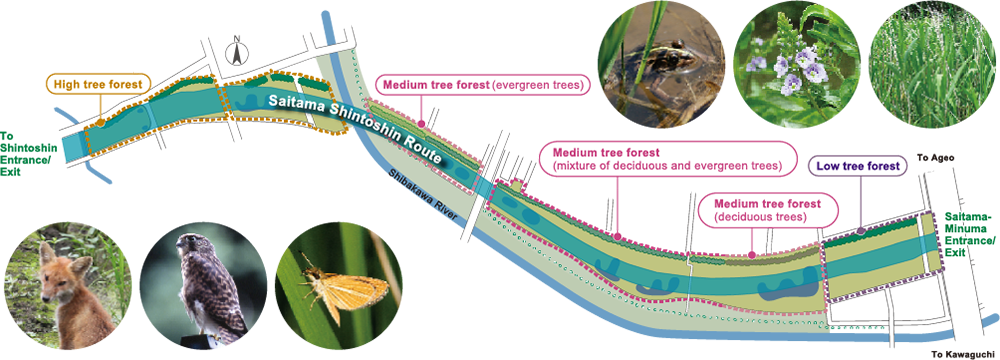
Photo courtesy of Ecosystem Conservation Society - Saitama
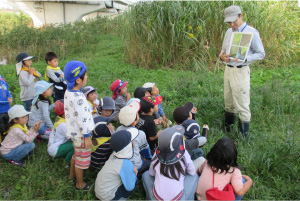
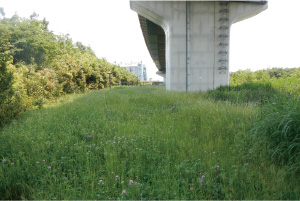
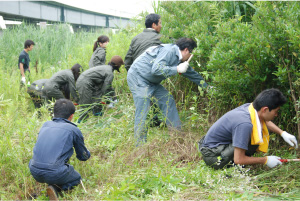
Greening of road spaces
We are planting out road spaces with the goals of improving the urban landscape and motoring conditions,
alleviating the heat island effect and preventing global warming.
Along roads, parking areas and junctions, we are working to establish greenery without neglecting the surrounding environment and maintenance.










We will look at applying an emissions trading scheme that trades greenhouse gas emissions quotas (or cap - a permitted volume of emissions).

Leading projects 11
Preparation of infrastructure for the growing uptake of
next-generation vehicles

○Beyond the expressway, we will also install EV chargers in Urban Planning Zone Carparks to support the growing uptake of next-generation vehicles (STAGE1)
○Consider installation of EV chargers not just in Urban Planning Zone Carparks but in carparks underneath highways (STAGE2)
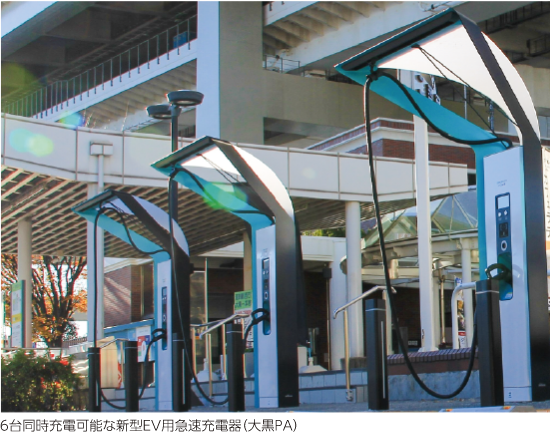
When it comes to preparing for the popularization of next-generation vehicles and fuel cell vehicles (FCVs) in particular, we will investigate the possibility of building hydrogen stations, based on automotive industry trends and the state of uptake of FCVs.

To support the popularization of next-generation vehicles,
we will look at installing wireless charging in locations such as parking areas and
road surfaces instead of traditional cable chargers.

Leading projects 12
Improved roadside environments

We will implement measures against noise and vibration
in order to protect the comfortable living conditions of local residents.
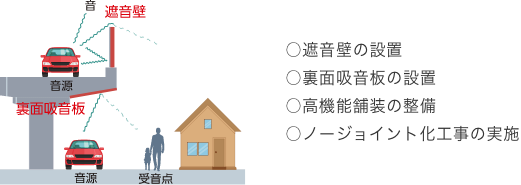
Installation of sound insulation walls
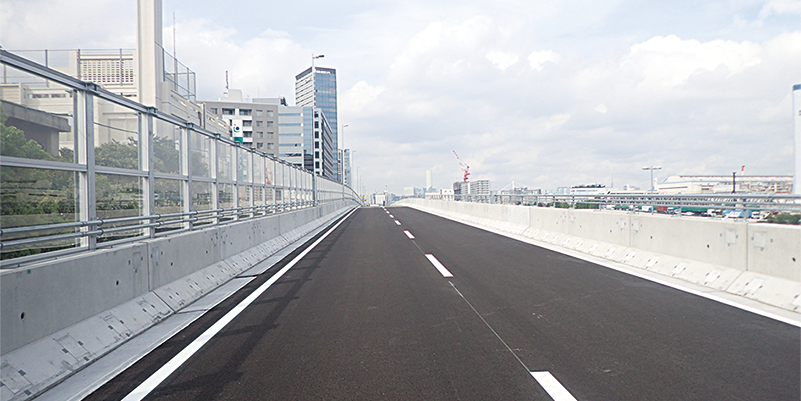
Sound insulation walls are installed for the purpose of reducing noise along the road in order to maintain a comfortable living environment.
We are currently working on adopting sound insulation walls to not only reduce noise but also take landscape into account.
Installation of backside sound absorbing plate
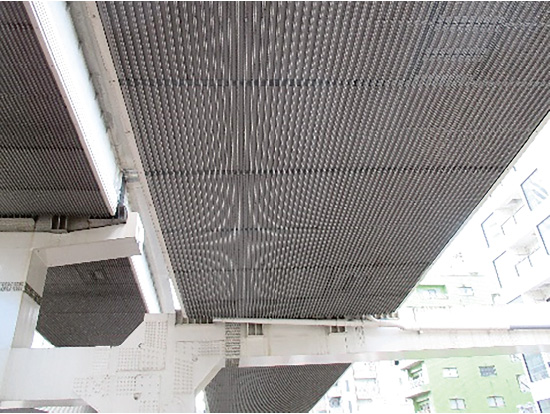
The back side sound absorbing plate is a plate installed on the underside (back side) of the viaduct. By installing a sound absorbing plate on the back side, it is possible to reduce the noise from the street reflected on the underside of the viaduct.
Maintenance of high-performance pavement
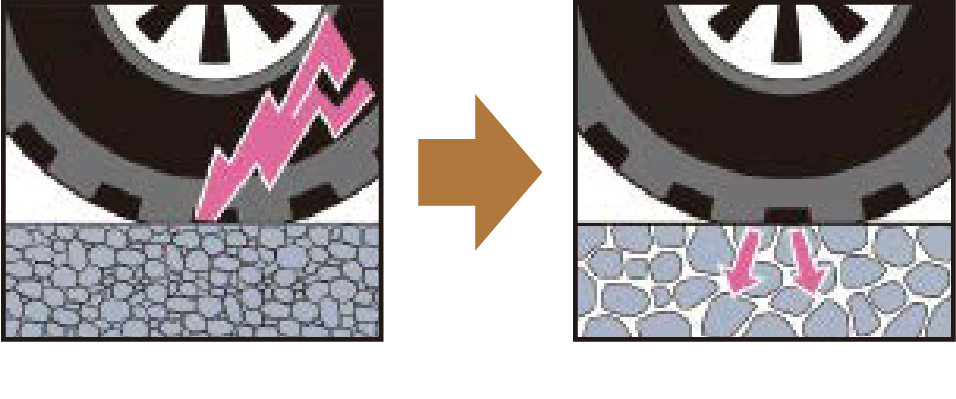
Normal pavement
High-performance pavement
By using a material with many voids in the pavement material, the compression of air between the road surface and the tire is reduced. There by the noise (air pumping noise) generated when the compressed air is released due to the friction between the tire and the road surface of the automobile is reduced. We will proceed with the maintenance of high-performance pavements.
Implementation of non-joint construction

By eliminating the joints on the road surface, we will realize smooth running without shocks, reduce noise and vibration, and proceed with non-joint construction. After construction, there is no need to repair the joints (replacement of joints), so it is possible to reduce traffic congestion associated with repair work.
column
Please avoid overloading because it can damage the roads and cause noise and vibrations
When procuring electricity for the Metropolitan Expressway, we will give priority to generation from renewable sources.
We will continue to provide technical consulting services.
○Continued management of Ohashi Sato no Mori (Ohashi ventilation station) and the Minuma Tanbo Shutoko Biotope as green nature restoration spaces (STAGE1)
○Conversion of junctions and ventilation stations to green spaces (STAGE1)
○Development of greening technologies that account for carbon sequestration capacity and ease of maintenance (STAGE2)



Ohashi Sato no Mori
"Ohashi Sato no Mori" is maintained on the roof of Ohashi Ventilation Center in Ohashi Junction.
As one of the bases of an ecological network that cooperates with the local green spaces and the nature of the Meguro River,
it is a green space that can contribute to the improvement of the local environment.
A
Ohashi Sato no Mori
—natural regeneration green space
One of the bases of an ecological network that cooperates with the natural areas of the Meguro River


B
Meguro Sky Garden
—a rooftop park with rich greenery
Japan's first park built on the roof of a circular loop junction



C
Wall Greening
—greenery in the city
Wall Greening that creates harmony with the surrounding environment (planting climbing figs)


Minuma Tanbo Shutoko Biotope
In the Minuma Tanbo area of the Saitama Shintoshin Route,
we are aiming to be a "new urban expressway in harmony with nature".
In order to maintain the ecosystem of the Minuma Tanbo area, which is one of the few valuable green spaces left in the suburbs of the capital, we have a biotope with a length of 1.7 km and an area of 6.3 ha under the elevated expressway.

Photo courtesy of Ecosystem Conservation Society - Saitama



We are trying to improve air quality for residents living near the Kanagawa Route No.1 Yokohane Line,
which runs through highly built-up residential areas, by applying an environmental road pricing discount.
This is being used to divert extra-large and large vehicles to the Bayshore Route instead.
Environmental road pricing discount
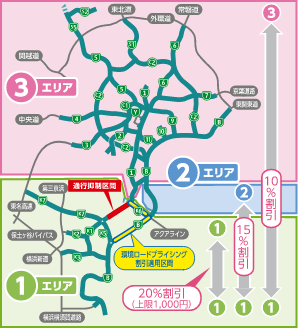
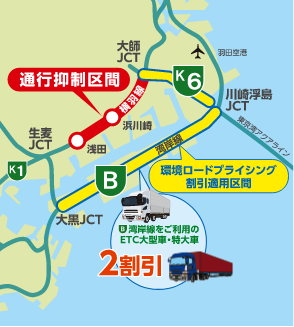
We are promoting the use of the Bayshore Route instead of the Yokohane Line to improve the environment along the Highway by applying an environmental road pricing discount to large and extra-large vehicles using the Bayshore Route or the Kawasaki Route.
Environmental road pricing discounts (Shutoko website)
Other air quality initiatives (Shutoko website)

